
If you’re traveling to Paris for the first time, part of your preparation would involve fussing over the details of public transport. Indeed, your Paris travel experience would be breezier if you are confident of your way around. Most blog articles about Paris travel would also convince you to walk. But the city is large and walking solely isn’t exactly convenient when the place you want to get to is on the opposite part of the city. So we’re penning this guide on how to get around Paris to help you understand the basics and hopefully become more confident in your navigation skills as you set foot into the City of Lights.
First and most importantly, it’s important to get the jargon out of the way. You have probably have already read about arrondissements and the River Seine and banks to the right and left. But what exactly do they mean? Understanding these directional phrases will help you better navigate the city on your own.
The city of Paris is divided into districts for administrative purposes. These districts are individually called arrondissements and there are a total of 20, arranged with the 1st located centrally. From here, the number spirals out clockwise with the 20th being on the outskirts of the city. For reference, the Musee d Louvre can be found on the 1st arrondissement, the Eiffel tower is on the 7th, while the Arc de Triomphe is located at the 8th.
For locals, there is another way of describing the location of a Parisian post and that is through the phenomenal River Seine which cuts through the city, almost in half. The northern half is commonly referred to as the Right Bank, while the southern part is called the Left Bank.
The Right Bank is bigger than its southern counterpart, encompassing a total of 14 districts or arrondissements. Meanwhile, there are only six districts to be found on the southern cut.
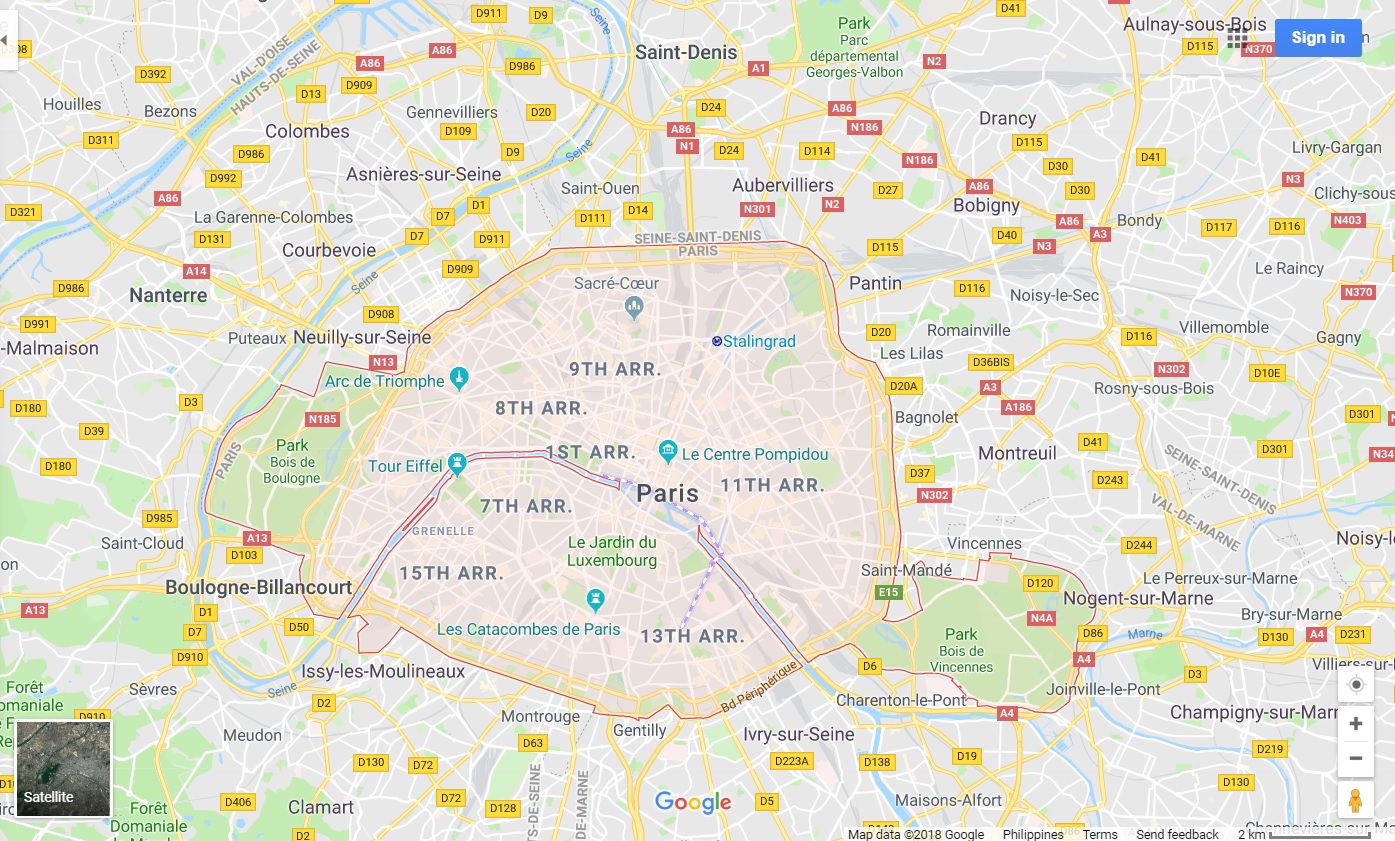
Source: Google Maps
Traveling around the city is easy. There’s not a shortage of options as to the type of vehicle or preferred transportation means. You can walk, take the river boats, take the metro or the buses, an Uber, cabs, even bicycles. But of course, one option can be more appropriate than others in terms of purpose. So let’s get to know these options.
Looking for the best apartment accommodations in Paris? Find them here.
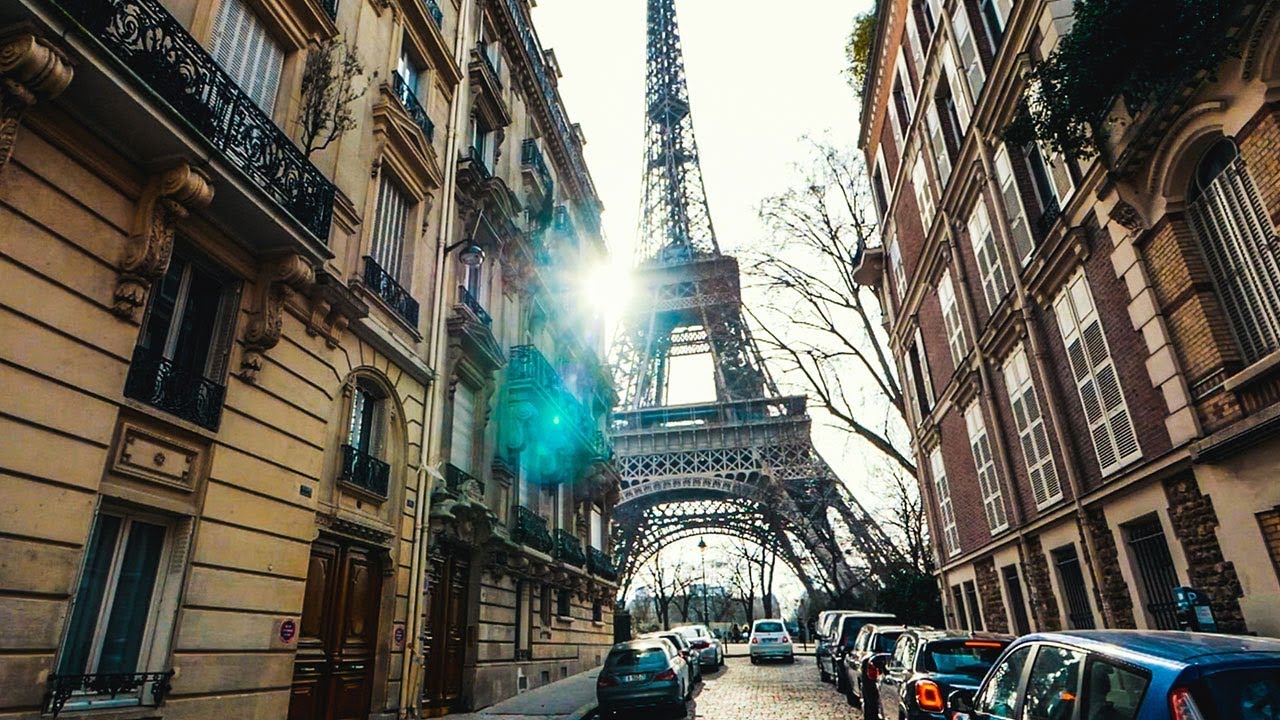
Source: YouTube
Being one - if not the - most beautiful city in Europe, Paris is most definitely worth a city walk. The cobblestone streets and alleyways are made for strolling and every corner hides beautiful surprises. The city prides itself in its picturesque boulevards and if you want to take travel photos, you have to go street. Not to mention, walking is also more personal and gives you more time to take in your surroundings. In Paris, guided walking tours are popular among tourists, although many also opt to go DIY, armed with a physical or digital map to explore the arrondissements and their hidden gems of shops and cafes.
Before you decide to head out for the day, make sure you know the address of your destination and its distance so you can estimate your walking time.
Unfortunately, depending on where you’re staying in the city, it might not be feasible to walk all day - lest you risk draining all your energy and missing all the fun in the night. Weather surprises can also stump any intent for a strolling adventure so you should always be ready for plan Bs.
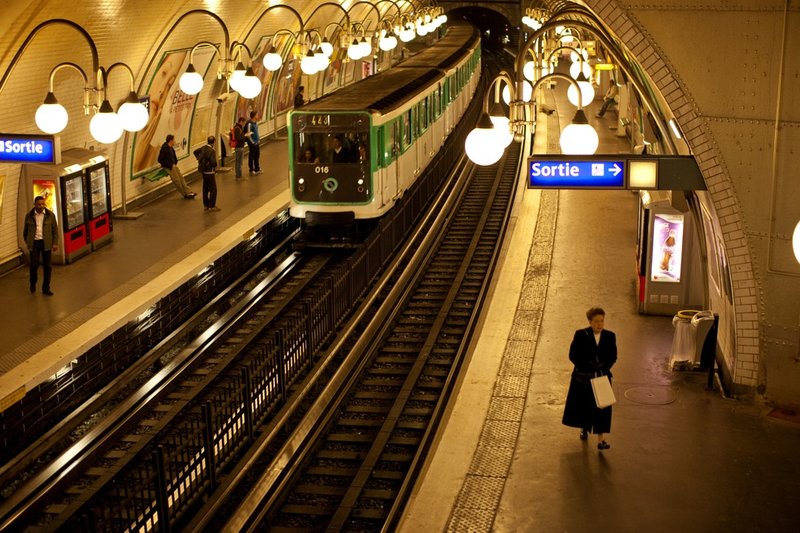
Source: NPR
You may pass the option to travel by Métro just because you think it’s too complicated. But the intimidating aspect easily fades once you know how it works. In fact, you may not have to bother about any other travel option in Paris once you get the hang of it.
The Paris Métro system is run by 16 Métro lines with 300 different stations operating within the central Paris area. Each Métro line is identified by number 1 to 14 and there are 2 secondary lines, the 3 bis and 7 bis (or 3b and 7b).
For the price of a single ticket, you can ride the Métro all day long as long as you don’t leave the system. It also grants you access to Paris city buses, Tramways, RER Train (zone 1, 2) and the Montmartre Cable Car.
You can buy a single ticket for a single, one-way journey (cost: €1,90€) or a book of ten which is offered at a reduced price (at 14,90€) than if you pay for one single tickets ten times. This is ideal if you have a good gauge of how often you’re going to take the Métro in a day. If you’re not sure how often you’re going to be using the Métro but know the zones you’ll be covering, a Mobilis pass is your best bet. This pass gives you unlimited travel within the zones of your choice. The Mobilis pass costs 7.50€.
A little thing has to be said here about the zones: Paris and the surrounding area are divided into five (5) circular zones. View the zone map here. To learn more about the zones, check out this detailed information.
You can also buy them by 1-day, 2-day, 3-day, or 5-day Le Paris Viste tickets which are especially catered to tourists. This pass allows unlimited travel in Paris and the Île-de-France region using all public transport networks. A Le Paris Viste ticket for 5 days costs 38,35 €.
Another type of ticket is the Navigo monthly and weekly travel passes. The following chart shows you the cost of each type of Navigo pass depending on the zones chosen:
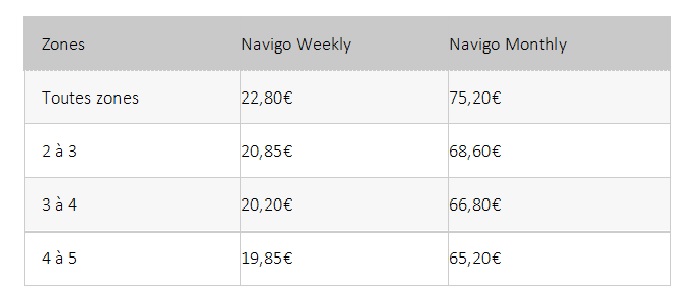
Where to get tickets? You can buy them from vending machines near the turnstiles in Métro stations or through the ticket windows inside. You can use them by sticking them in the turnstyle slot and taking them when they’re returned. Always keep them with you, especially if you’re always using the system. There are random checks from inspectors and failure to show your ticket can be subject to a fine, not to mention embarrassing too!
Paris’s Métro opens daily from 6:30 am to 12:30 in the midnight. Maps of the Métro are easily accessible online. Sometimes, your hotels or accommodations may even offer them. They are also purchasable in local stores. If you want a digital guide, use the RATP Maps Guides. Once you know how the whole system works, you’ll understand that the Métro system is one of the most practical ways to get around Paris.
Make your Paris vacation extra special. Stay in a private accommodation you can call home.
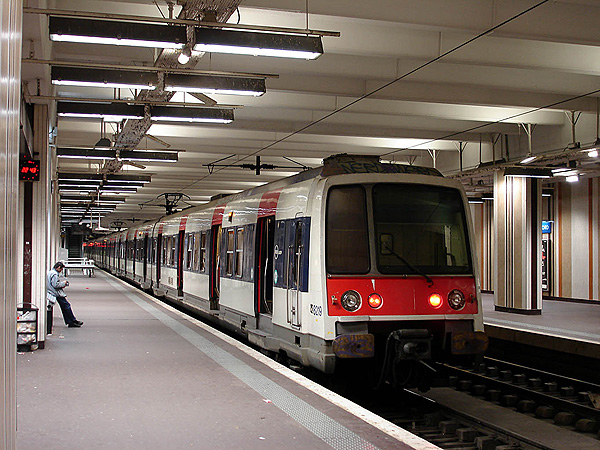
Source: Railway Technology
The RER (Réseau Express Régional) is the regional train system in Paris that operates in five different lines which pass through central Paris. In some cases, it may be convenient to take the train instead of the Métro. In fact, your Métro tickets are valid for use in RER trains that run through areas in the city central. But because the Métro lines run frequently, more people opt for the Métro instead. Primarily, however, the RER Trains are most feasible for trips to the suburbs or to the airport.
The RER lines are designated by letters from A to E and are color-coded. A is Red, B is Blue, C is Yellow, D is Green, and E is Purple, respectively. The RER Train is the more convenient transport system if you’re going to Orly Airport, to Charles De Gaulle, to Disneyland, or to the more destinations outside the city center.
The price of tickets differ on your departure and destination. They can be purchased via vending machines or through ticket windows in any Métro or RER station.
Here’s a guide of the Paris RER Map.
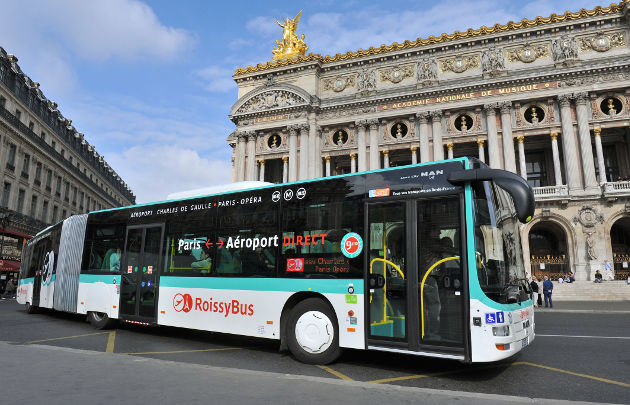
Source: Paris Tourist Office
Tired of the underground? Seek the more scenic routes! This is a wonderful option to those who want to see the city but don’t want to walk just yet, either because they are too tired from their flight or just don’t want to get lost about in the complexity of the Métro.
The Régie Autonome des Transports Parisiens (RATP), the state-owned transport operator and maintainer in Paris operates 59 bus lines that cover central Paris and its suburbs. Your Métro ticket can get you a ride in the city buses but if you buy your ticket on the bus itself, it can be more expensive at 1,90€.
Hang on to your tickets as there are personnel who come to inspect them every once in a while. If you’re going to transfer to another bus, you’re going to need another ticket. If you’re using Navigo passes or the Le Paris Viste, you might be asked to show them to the driver as well.
You may also notice double-decked buses roaming the city. These are tour buses operating on a Hop-On, Hop-Off concept which is a great idea if you wanna see an overview of Paris or have limited travel time and can’t visit all the places you want during your stay. The Hop-On, Hop-Off concept makes it easier to move from one site to the next with considerable ease. Most of the buses also have headphones in them for audio guides, for those who don’t want to keep looking at their maps or haven’t done their homeworks beforehand.
Tickets for tour buses can be a bit pricey at around 25€ to 50€ depending on numerous factors such as if you’re going to take a day tour, a night tour, or both, the destination, and the number of days.
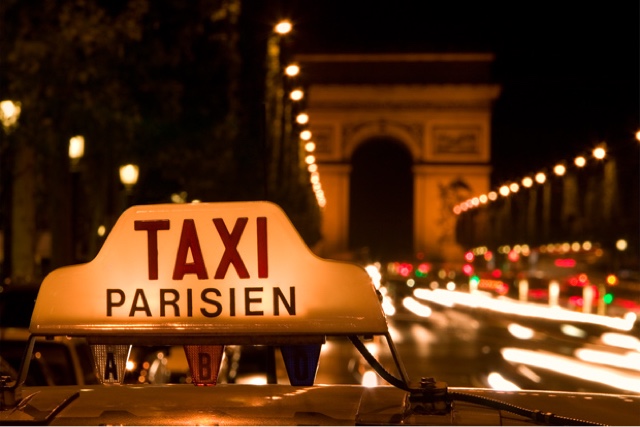
Source: Taxi Leaks
Getting a cab in the City of Lights should not be a problem for you, given that there are over 17,000 cabs and cars for hire in the city itself. But of course, there will always be circumstances where hailing a cab just wouldn’t be in the question. For the most part, if you’re planning to take one, especially for a trip that you shouldn’t miss, you’re better off arranging a cab schedule ahead of time. You can hail a cab anywhere in the city, although there are designated taxi ranks spread throughout Paris where depending on the demand, you’d have to wait in line.
The official Parisien taxi has a Taxi Parisien sign on the roof. It’s green when vacant and red when occupied.
The taxi charge a 2,60€ service fee and the mileage rate would depend on where you are and at what time you’re using the service. Each Monday to Saturday from 10am to 5pm, you will be charged 1,06€ on top of the service fee on every kilometer traveled. From 5pm to 10am, the fare hikes to 1.30€, including from 7pm to midnights on Sundays. There’s also a fee for each piece of luggage. If you’re lucky, you can find a driver who will consent to more than three passengers at a time. If not, there’s usually a charge for the fourth person.
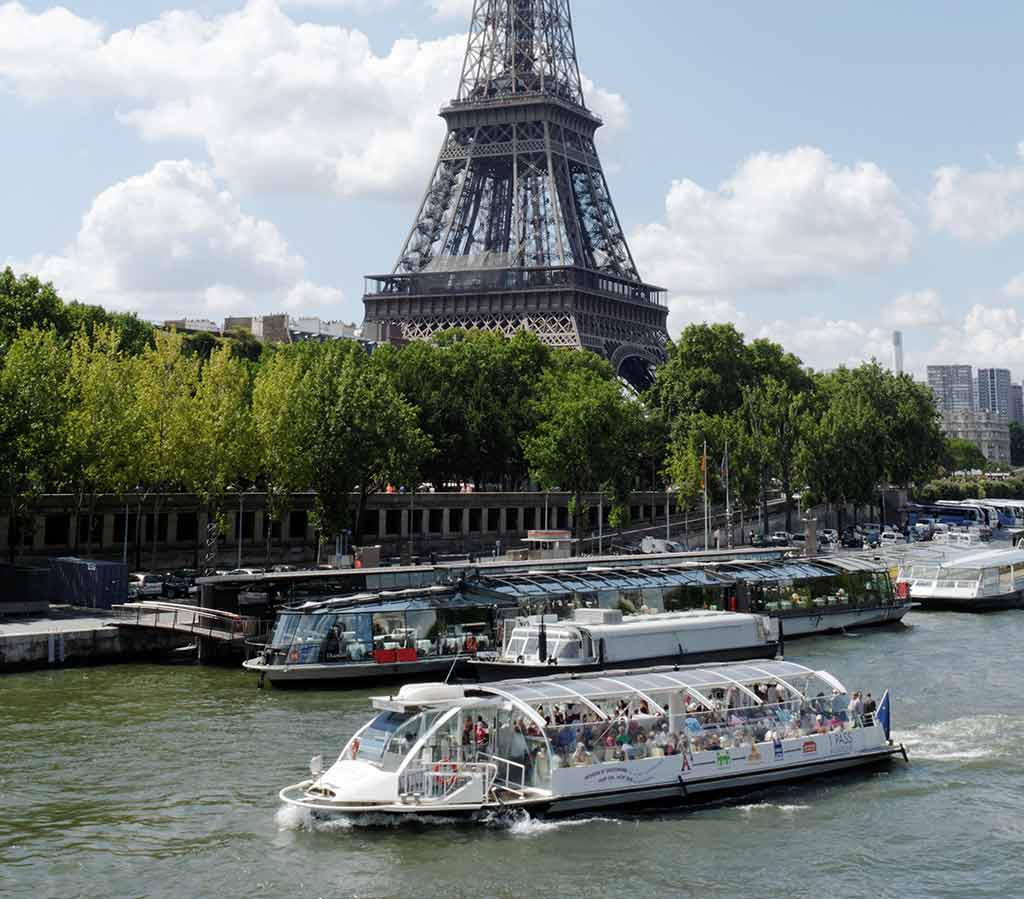
Source: Paris mal anders
An interesting way of seeing Paris through the flowing waters of the Seine, the Batobus takes you to 9 destinations in Paris: the Eiffel Tower, Invalides/Pont Alexandre III (opening summer 2018) Musée d'Orsay, St Germain des Prés, Notre-Dame, Jardin des plantes/Cité de la Mode, Hôtel de Ville, Louvre, and the Champs-Elysées.
The Batobus runs every 20 to 40 minutes and you can get on and off anytime during a specified period of time so you don’t have to line up for tickets every time.
Its travel time really depends on the season. Every day, it travels from 10am and closes at 5pm, 7pm, or 10pm. It runs every 25 minutes from the end of April to the start of September, every 30 minutes from the Start of September to the start of November as well as in April, and every 40 minutes from the start of November to the end of March.
The prices of the tickets are as follows:
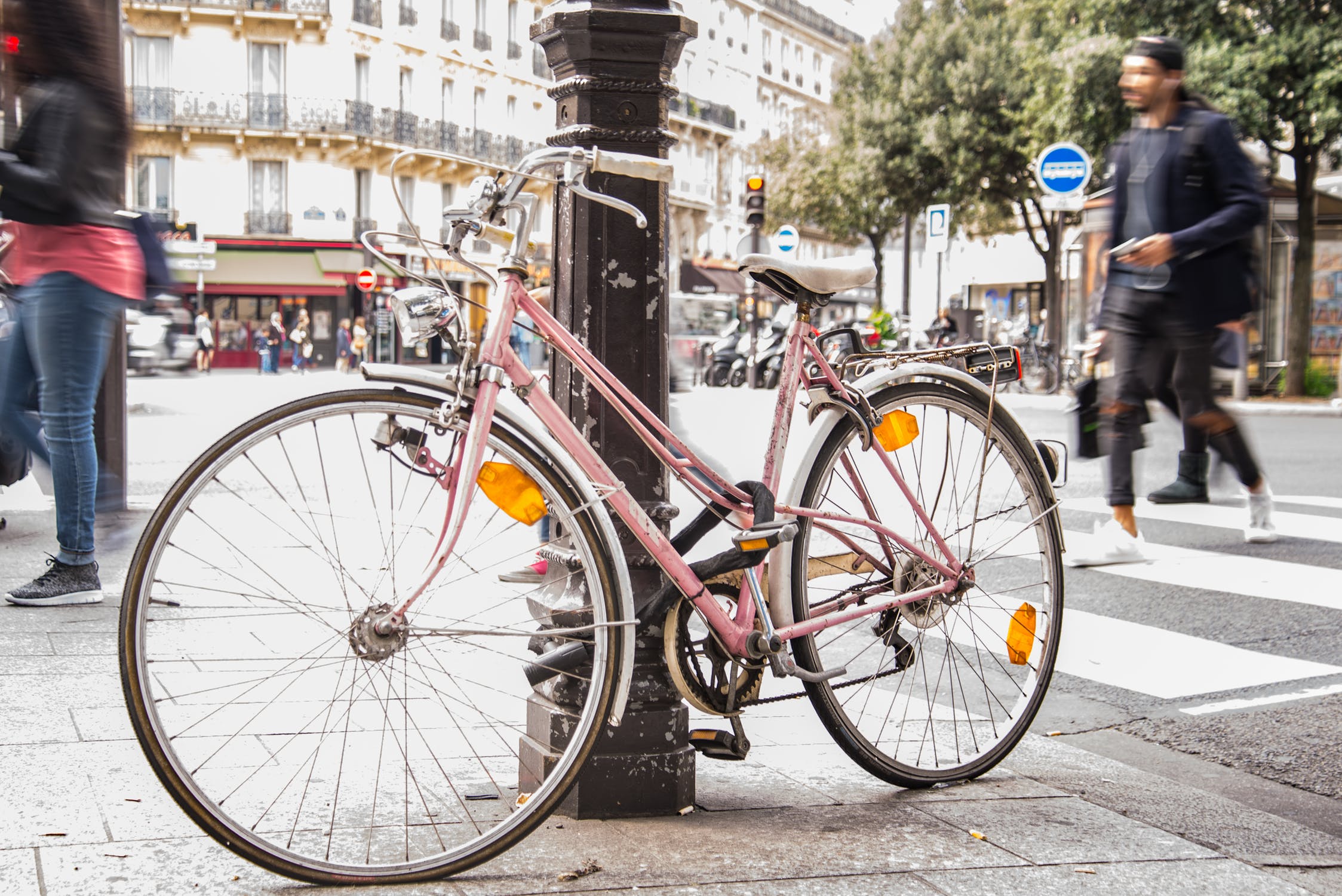
Source: Pixabay
Biking is a leisurely, efficient, and environmentally-conscious way to travel Paris. It allows you to get up close with the sights but not fast enough to forget it after a glance. Parisians know this and so they’ve invented a friendly system where locals and tourists can get around in a breeze using bicycles.
This bike-sharing system called Velib was launched way back in 2007, now with almost 15,000 bicycle units available to the public spread throughout 1,800 stations.
To be able to use the Velib system, you need to purchase a 1-day ticket. You can buy them through the website or by downloading the app. A single Velib pass allows you to take up to 5 Velib at one time but you can purchase either a 1-day or a 7-day pass. The V-DÉCOUVERTE 1-Day Pass costs 5 € while a V-SÉJOUR 7-Day Pass costs 15 €. A pass grants you access to all Velib bikes all over the city. The beauty of the whole system is that the first 30 minutes of use is free. Only for each additional half hour of use will you be charged for a euro and up. That means if you’re only taking a few short trips to your destination and return the bike to the docking station after each short trip, you should be able to use the system without incurring any utilization fees!
The whole system is smart and efficient as it is!
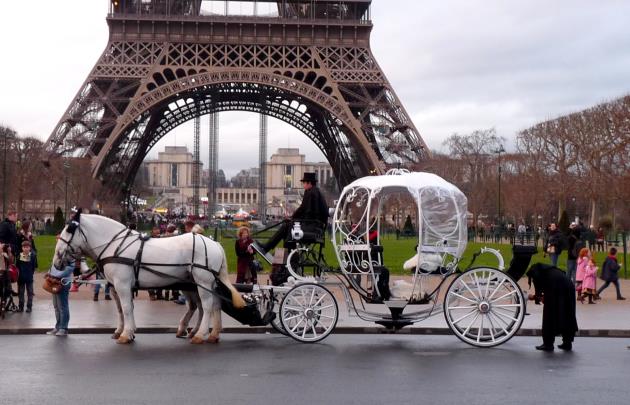
Source: Paris Tourist Office
What better way to even romanticize your Paris experience more than a horse and carriage ride around the City of Lights? Undoubtedly one of the most interesting ways to get around Paris, this tour special is perfect for seeing the best sites of the city in the most romantic way, perfect for couples and families with kids. You can easily find deals online that will cater to your preference for time of day and will take you to the most popular destinations in the city including the Eiffel Tower, the Arc de Triomphe, the Champs Elysées, Grand and Petit Palais, and the Trocadero, complete with a bottle of champagne!
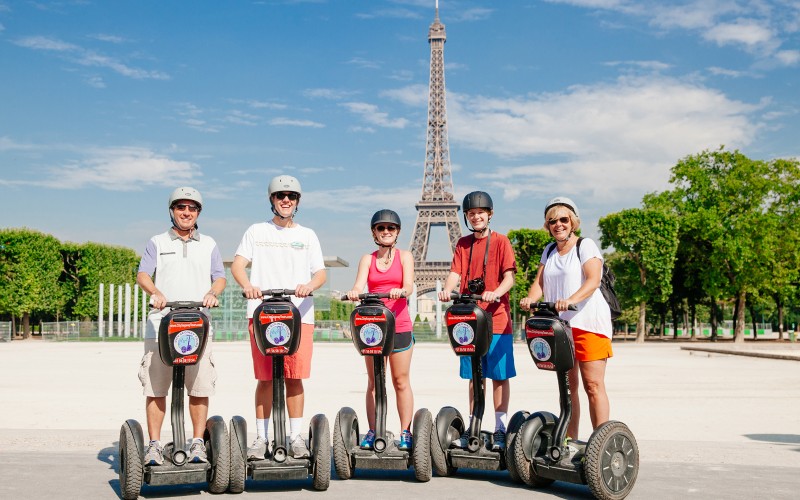
Source: Fat Tire Tours
A segway is a two-wheeled personal vehicle that is self-balancing and makes for a convenient way to travel around urban spaces. It usually takes some 10 minutes to learn how to navigate the equipment. This is ideal for those who don’t want to spend much energy walking or biking while sightseeing. It’s also a nice experience to have fun with family, friends, and travel buddies.
Just like regular walking tours, you can find various segway tour offers online, usually held in groups. You will be guided by an instructor who will teach you how to use the equipment and have fun while in it. The price of the tours depends on the the duration and the destinations you will visit.
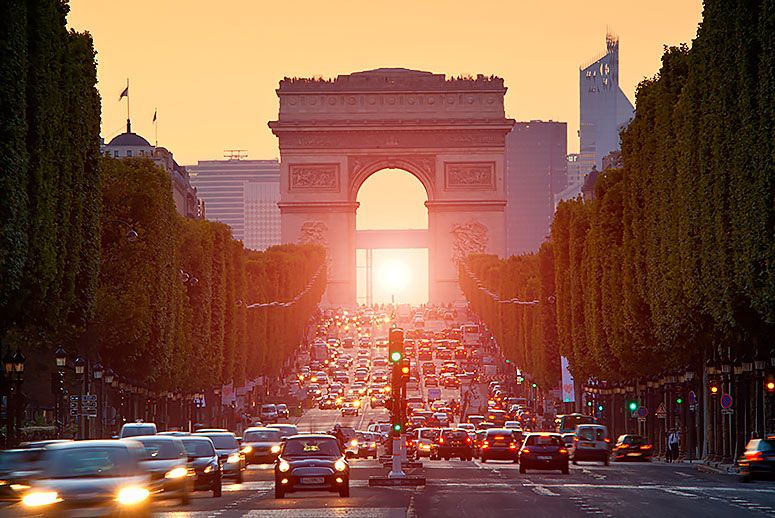
Source: TakePart
Unless you are planning to cover much ground in the city suburbs or its outer parts, it’s highly ill-advised to drive, lest spend time renting a car to navigate through Parisian streets. If you’re not a local, driving can be a total nightmare. There’s the traffic, the confusing signs, not to mention the lack of places to park. So as much as possible, do with the other options we’ve mentioned above.
Getting properly informed is your best pill against travel anxiety, especially if traveling a place for the first time. Hopefully this guide has given you enough to conveniently face your fears and get around Paris with more confidence and peace of mind.